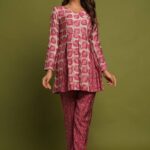Indian weddings are known for their vibrant colors, intricate details and stunning saris. As either a guest or the bride herself, selecting the appropriate saree for an occasion may seem like an overwhelming task. Fabric, colors and embellishments all need to be considered. This comprehensive guide will walk you through how to select the perfect saree that is both gorgeous and appropriate.
Fabrics for Saree
The first decision to make is choosing a fabric. Here are some of the most popular options for Indian wedding saris:
Silk – Nothing looks more elegant at an Indian wedding than choosing silk fabrics such as Kanjivaram, Banarasi or Mysore silk – with their luxurious textures and sheen making them timeless classics. Choose a heavier fabric such as Kanjivaram for cooler months while for summer ceremonies opt for lighter fabrics like chiffon or georgette silk fabric instead.
Cotton – Cotton sarees are a great lightweight and breathable choice, especially for daytime wedding events. Intricately woven and embellished cottons like Ikat, Mangalgiri, or Chanderi make beautiful options.
Chiffon – Chiffon is an ethereal, flowy sheer fabric that drapes dreamily. Look for a high-quality chiffon that won’t wrinkle easily. An embellished chiffon sari makes a gorgeous choice for the reception or Sangeet.
Crepe – Crepe is a crisp fabric that holds pleats nicely, making it another wise choice. Khadi and silk crepes are especially popular.
Blends – Many modern Indian saris feature fabric blends, mixing cotton with silk, polyester, and rayon for unique textured effects. These maintenance-friendly saris combine comfort and luxury.
Read about: The Complete Guide to Indo-Western Wear for Women
Best Colors for Saree
The colors and patterns you choose for your Indian wedding saree convey meaning and set the tone. Here are some considerations when selecting a hue:
Bright or Neutral – Most Indian wedding guest saris feature bright, vibrant shades that are associated with celebration. However, if you’ll be attending multiple events, include a more neutral saree in ivory, gold, blush pink, or gray as well. This gives you options for different occasions.
Auspicious Red – Nothing symbolizes a Hindu marriage more beautifully than wearing red. Traditional red Banarasi or Kanjivaram saris make treasured heirlooms for the bride or female members of both families.
Regional Style – India has diverse regional styles of draping saris in customary colors from bright Rajasthani red and leheriya prints to purple and magenta tones of Tamil Nadu. Consider showcasing styles unique to the wedding’s culture.
Personal Taste – While trends and traditions influence choices, ultimately you should select a color you feel confident and happy wearing. The right hue flatters your complexion.
Embellishments & Motifs

Embroidery, mirrors, sequins, zari, and other embellishments elevate a nice saree into a spectacular one. Decorate the saree with motifs that are meaningful to the bride and groom’s union.
Intricate gold or silver zari weaving – Heavily woven gold and silver threads create a regal, luminous effect. Often seen on Banarasis, Kanjivarams.
Sparkling crystals – Swarovski crystals are used to create dazzling patterns fit for royalty.
Sequins – Intricate sequin work in geometric, floral or paisley designs for glamorous shine.
Phulkari or Chikankari – Colorful Punjab and Lucknowi thread embroidery looks vibrant.
Kundan and stones – Kundan jewelry work applied to saris is very auspicious and luminous. Pair with stone accents.
Mirrorwork – Tiny pieces of mirror dazzlingly reflect light. Seen on Rajasthani and Gujarati saris.
Zardozi – Metallic embroidery often in floral, creeper or paisley designs done with gold or silver thread.
Styles & Trends
While ultra-embellished saris are very popular at weddings nowadays, you’ll want to select a style suited to your body type and that aligns with your personal fashion sense.
Lehenga Style – Lehenga style half-saris are easier to drape for those unaccustomed to saris.
Crop Top Style – For reception saris, stylish crop tops or blouses paired with long embellished skirts are on-trend.
Pre-Pleated – Many modern saris come pre-stitched with perfect knife or box pleats so even beginners can easily drape them.
Mix & Match – Creative brides are using mix and match options like pairing contrasting silk blouses with Kanjivaram saris for unique effects.
Themed – For destination or fusion weddings, themed saris can incorporate everything from tropical prints to traditional Chinese cheongsams to Western gown silhouettes.
Heirloom – Treasured handloom saris passed down through generations tell a beautiful story. Vintage saris in silk or cotton make gorgeous bridal and trousseau options.
Pro Tips & Accessories
Follow these pro tips for looking spectacular in your Indian wedding saree:
1. Have your saree professionally starched and pressed so pleats hold neatly.
2. Select a comfortable petticoat and blouse that won’t poke, pinch or restrict movement.
3. Newcomers should practice draping ahead of time. There are many online tutorials.
4. False pleats and pins can help you achieve cleaner looking drapes.
5. Finish the look with statement earrings, a matching clutch and strappy heels.
6. Adorn your bun or braid with gajras, hairpins and fresh flowers.
Dazzling the crowds with a sublimely beautiful saree at an Indian wedding is every woman’s dream. Follow this guide and you’re guaranteed to look like royalty when you glide into the venue. The bride herself will be envious of your iconic look as you pay tribute to cherished cultural traditions and make unforgettable memories.


